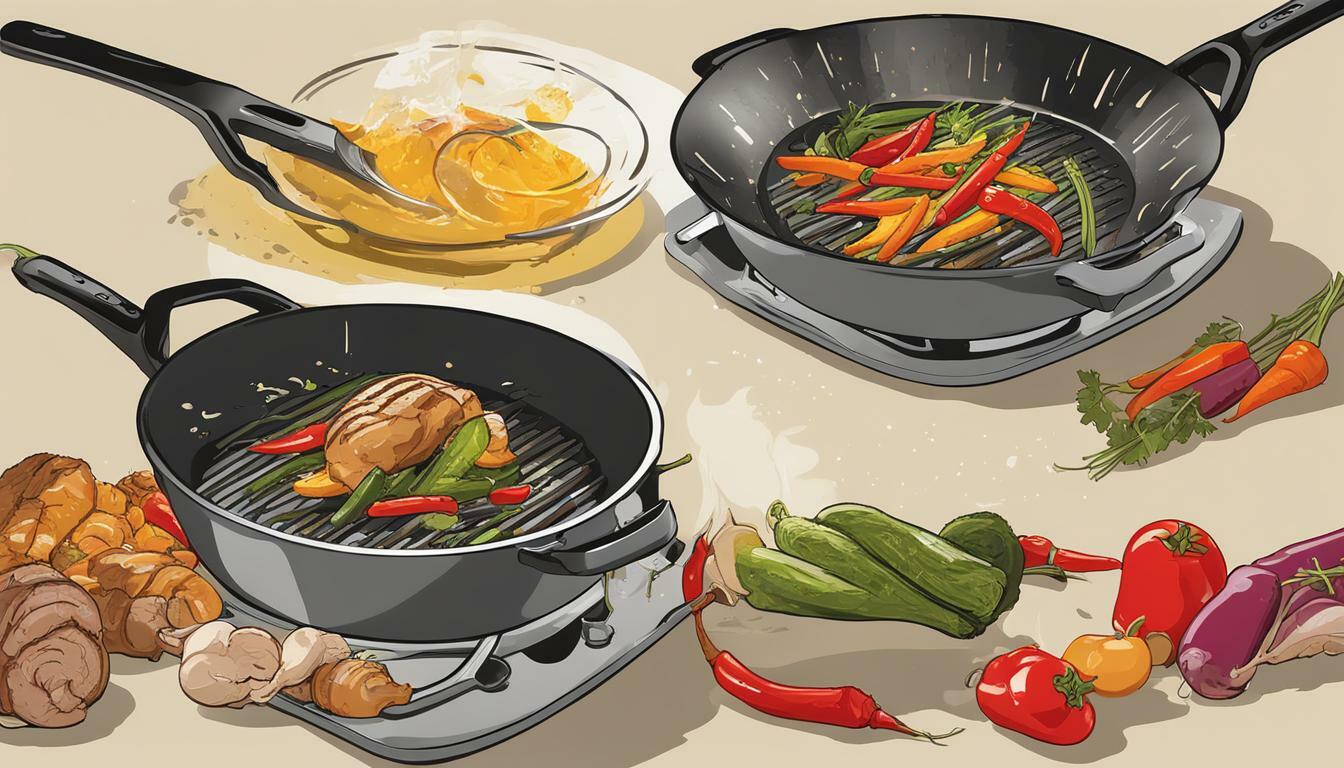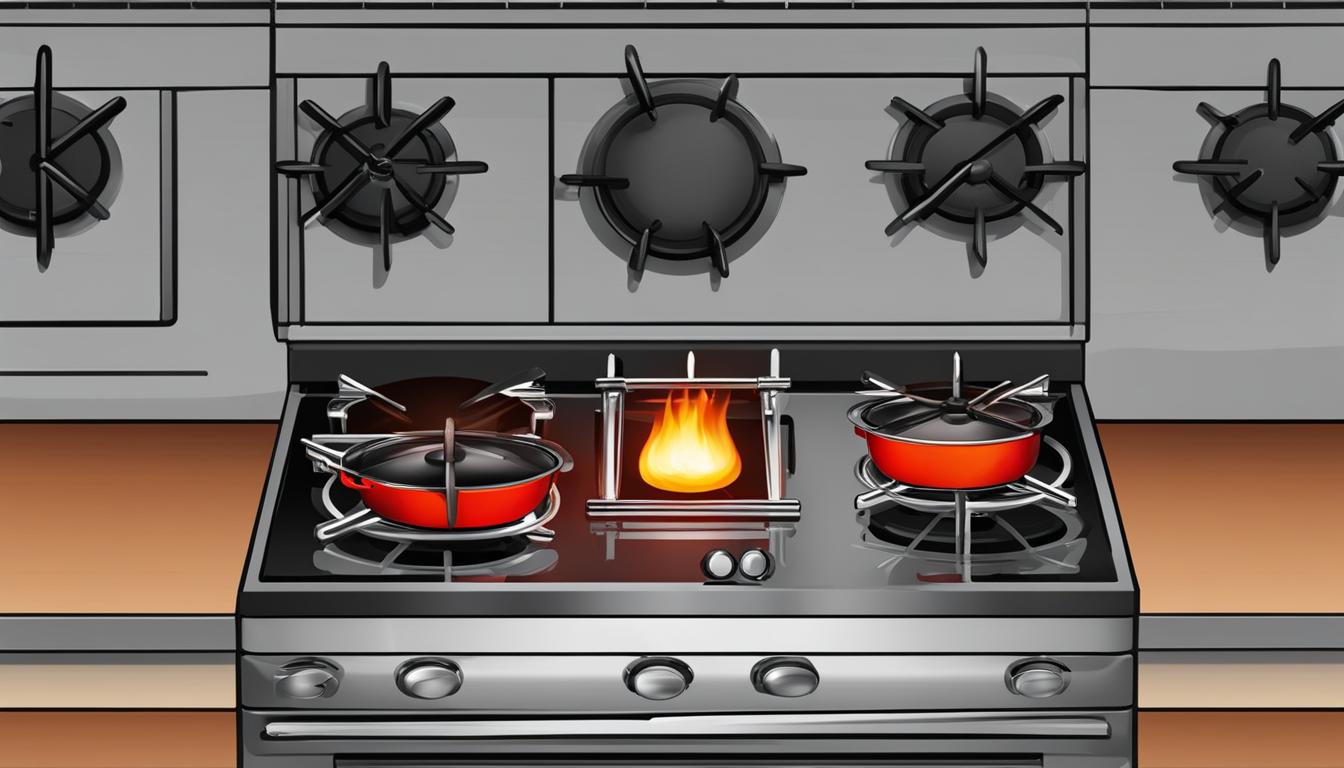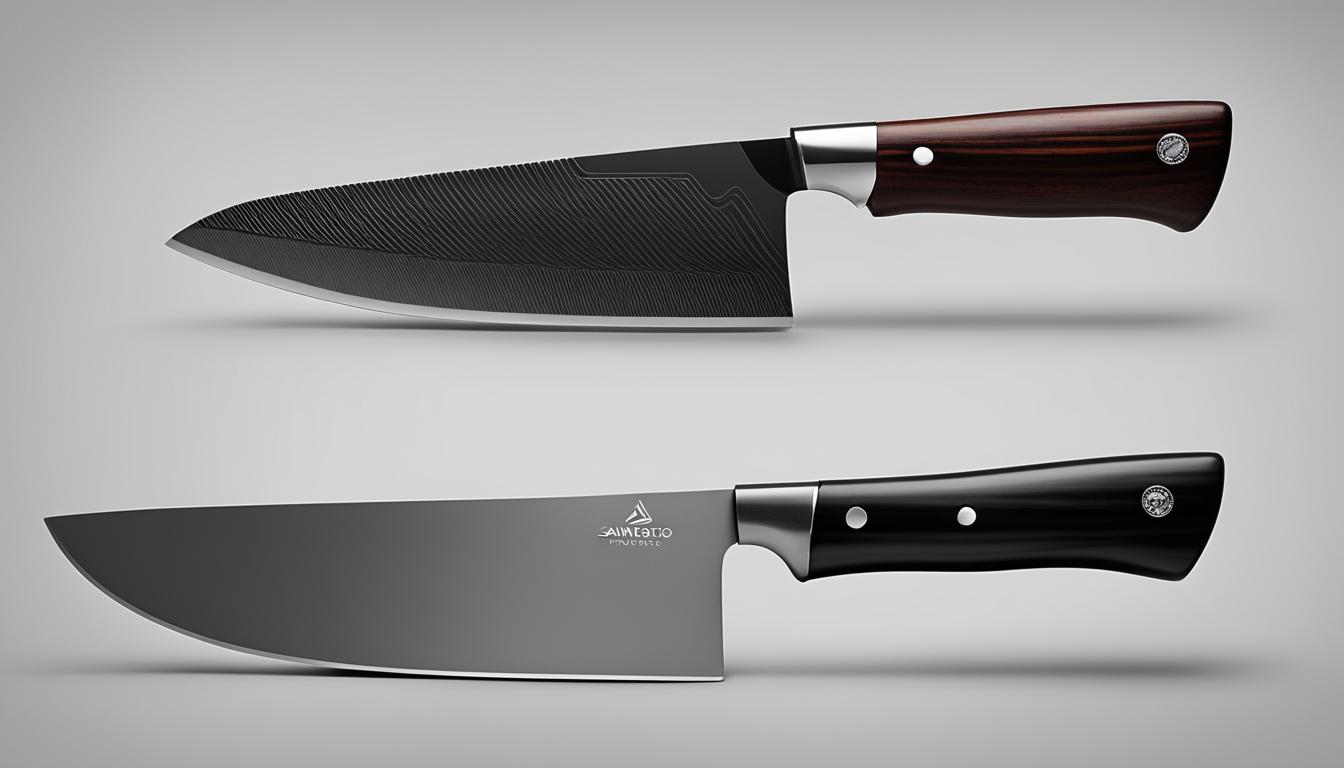If you are a passionate cook or a food enthusiast, you must have heard of sautéing and stir-frying. Both techniques are popular cooking methods that can transform any dish, add depth to flavors, and enhance the overall taste of your food. While sautéing and stir-frying might seem similar, they differ in many ways. Understanding their dissimilarities and similarities is essential to achieve the desired results in your dishes.
In this article, we will explore the fundamental differences between sautéing and stir-frying, the techniques involved in each, and provide tips to help you master both cooking methods.
Key Takeaways:
- Sautéing and stir-frying are two popular cooking techniques used to quickly cook ingredients.
- By understanding their differences and similarities, you can elevate your cooking skills and create delicious dishes with confidence and precision.
- Techniques, equipment, cooking methods, heat, cooking time, oil usage, and ingredient preparation are key factors that distinguish sautéing from stir-frying.
Techniques of Sautéing and Stir-Frying
While sautéing and stir-frying share the same goal of quickly cooking ingredients, they employ different techniques to achieve it.
Sautéing requires high heat and a small amount of oil. The ingredient, such as meat or vegetables, is generally cut into small pieces or thin slices for even cooking. Heat up the oil in a pan until it shimmers. The ingredients are then added to the pan and constantly stirred or flipped. The technique cooks the ingredients evenly, and the high heat produces a crispy exterior while retaining the texture inside.
Stir-frying is a technique that involves cooking ingredients at even higher temperatures and with more extensive agitation. Stir-frying uses a wok or a wide, shallow pan with sloping sides to allow constant stirring. The ingredients are cut into smaller portions and typically pre-marinated before cooking. Vegetables are frequently added first to the wok, followed by the meat. Once the food is cooked, a sauce is added for flavor.
Both techniques demand careful attention, and it’s crucial to have all ingredients ready before starting cooking. Moreover, it’s essential to monitor the heat throughout cooking and avoid overcrowding the pan or wok to ensure even cooking.
Sautéing vs Stir-Frying: The Similarities and Differences
While both sautéing and stir-frying involve quickly cooking ingredients in a hot pan, they differ in several ways.
| Sautéing | Stir-Frying | |
|---|---|---|
| Heat | Medium-high | High |
| Cooking Time | Short (2-5 minutes) | Short (2-4 minutes) |
| Oil Usage | Less oil | More oil |
| Ingredient Preparation | Cut into small, uniform pieces | Cut into small, uniform pieces |
As shown in the table, sautéing typically uses lower heat and less oil, while stir-frying uses higher heat and more oil to create a crispier texture. Additionally, stir-frying requires constant stirring and tossing to prevent ingredients from sticking to the pan.
With sautéing, the ingredients are typically cut into small, uniform pieces that can cook quickly and evenly. This technique is often used for tender ingredients such as vegetables or meat, which require short cooking times to maintain their texture and flavor.
Stir-frying, on the other hand, is ideal for denser ingredients like meat or tofu, which benefit from the higher heat and faster cooking time. The constant movement of the ingredients in the pan helps to distribute the heat evenly and fully cook the ingredients.
In summary, while sautéing and stir-frying share some similarities in terms of quick cooking and small, uniform ingredients, their differences in heat, oil usage, and ingredient preparation make them distinct techniques for achieving different culinary results.
Sautéing vs Stir-Frying: What’s the Difference?
While sautéing and stir-frying share some similarities, they have distinct differences that set them apart. Understanding these differences is essential to achieve the best results in your dishes.
One significant difference between sautéing and stir-frying is the level of heat used. Sautéing involves cooking ingredients over medium-high heat, while stir-frying requires high heat. This difference affects the cooking time and texture of the ingredients.
Another key factor is the amount of oil used. Sautéing typically requires less oil than stir-frying, as it involves cooking in a shallow pan with just enough oil to coat the bottom. In contrast, stir-frying uses more oil to facilitate the high temperature cooking process and prevent ingredients from sticking to the pan.
The ingredient preparation also differs between the two techniques. Sautéing involves cooking small, uniformly-sized pieces of meat or vegetables in a single layer, allowing them to cook quickly and evenly. Stir-frying involves continually stirring and tossing the ingredients in the pan, resulting in a more complex flavor and texture.
Finally, the equipment used for each technique also varies. Sautéing requires a flat-bottomed pan with low sides, while stir-frying necessitates a wok or a deep, curved pan to accommodate the tossing and stirring of the ingredients.
To summarize, the main difference between sautéing and stir-frying lies in the level of heat, the amount of oil used, and the ingredient preparation. Understanding these nuances will allow you to choose the appropriate technique for your dish and achieve the best results.
Conclusion
In conclusion, sautéing and stir-frying are two popular cooking techniques used in the kitchen to quickly cook a variety of ingredients. While they share some similarities, such as the use of high heat, oil, and quick cooking times, they are distinct cooking methods with unique characteristics.
By understanding the differences between sautéing and stir-frying, you can select the appropriate technique for your recipe and achieve the desired results. Whether you’re looking to sear vegetables, cook meat, or create flavorful sauces, mastering these techniques will elevate your cooking skills and make your dishes stand out.
Takeaway
The next time you’re in the kitchen, consider whether you want to sauté or stir-fry your ingredients. Remember to adjust the heat, oil usage, and cooking times accordingly, and experiment with different flavorings and seasonings to create your own signature dishes. With practice and patience, you can become a master of these essential cooking techniques and impress your family and friends with your culinary prowess.
 Skip to main content
Skip to main content


